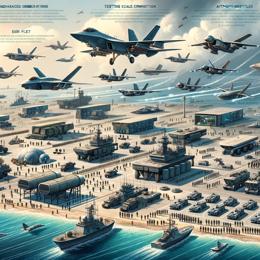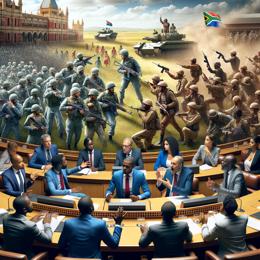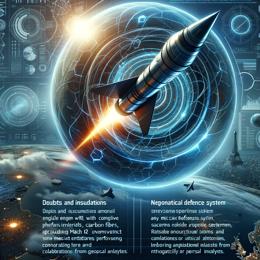Image created by AI
Russia Conducts Extensive Nuclear Forces Drill Amidst Escalated Global Tensions
In a display of formidable military might, Russia executed a vast exercise of its nuclear capabilities on Tuesday, sending a stern message amidst heightened global tensions. President Vladimir Putin presided over the maneuvers which saw an array of intercontinental ballistic missiles (ICBMs) traversing thousands of kilometers, simulating a nuclear counterstrike following an enemy's first blow.
This demonstration of strength occurs against the backdrop of the ongoing conflict in Ukraine, highlighting Russia's burgeoning geopolitical disputes with Western nations. Putin stressed the significance of maintaining a modern and combat-ready strategic force, framing the exercise as a response to the surge in global tensions and what Moscow perceives as emerging threats.
In direct remarks, Putin alluded to avoiding participation in a prospective new arms race. However, he maintained that Russia's nuclear force would be preserved at a necessary level of 'sufficiency,' signaling continued investment in its deterrent capabilities.
The drills showcased the prowess of Russia's triad, encompassing ground-based launch systems, nuclear-powered submarines, and strategic aviation platforms. Notably, the Yars ICBM was launched from the Plesetsk cosmodrome to the Kura test range in Kamchatka. A strong undersea component was emphasized with two ballistic missile submarines – the Novomoskovsk and the Knyaz Oleg – executing ICBM test launches from disparate locations in the Barents Sea and the Sea of Okhotsk. Additionally, Tu-95 bombers practiced long-range cruise missile launches, with all weapons reportedly hitting their intended marks.
These exercises follow Moscow's warnings to Western countries regarding their support of Ukraine, specifically intimating that the provision of longer-range missiles capable of striking deep within Russian territory would prompt Russian retaliation.
Putin underscored these cautions by revealing revisions to Russia's nuclear posture. A significant update denotes Moscow's readiness to assimilate a conventional attack by a non-nuclear state, backed by a nuclear power, as a collective assault, alluding to the U.S. and allied backing of Kyiv. Moreover, the adapted nuclear policy includes the potential to deploy nuclear armaments in response to widespread air attack scenarios, augmenting the parameters that might trigger a nuclear response.
Amidst the strategic signaling and rhetoric, it remains to be seen how these developments will influence the already precarious global order, and whether such demonstrations will evoke restraint or stoke further confrontation.










